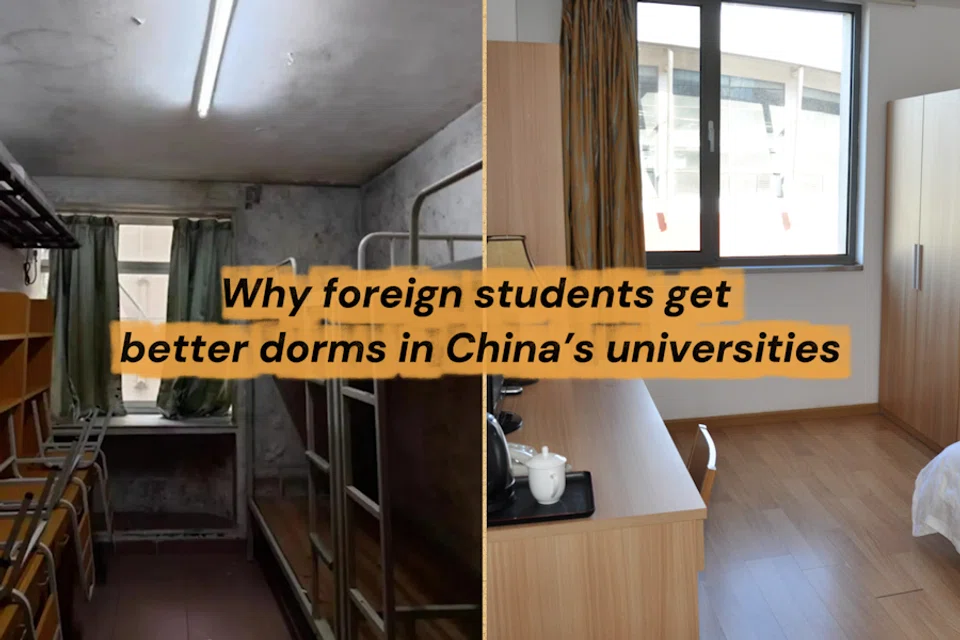[Video] Why foreign students get better dorms in China’s universities
China’s summer heat has turned campus life into a battle of comfort. While international students lounge in cool, air-conditioned dorms, local students bake in crowded, fanless rooms, with some even sleeping in corridors, libraries or minimarts just to find relief. The stark contrast has left many asking in frustration, “Why are foreigners treated better than us in our own country?”

The differences are hard to ignore. Local students often squeeze into crowded rooms of four, six or even eight, sharing communal toilets with dozens of peers. In contrast, international students are housed in separate buildings, often in single or double rooms with attached bathrooms, and in some cases even a shared living room. Hygiene standards are also worlds apart, with international dorms boasting far cleaner and newer facilities. Some campuses even provide lifts and communal kitchens exclusively for them.
Rules around electricity highlight another divide. Many local dorms cut power overnight and ban high-wattage appliances such as hairdryers, electric pots and fans, citing fire risks and fragile circuits. Air conditioning is rare. International students, however, enjoy round-the-clock electricity, air conditioning in most rooms and fewer restrictions. Many even have personal fridges.
Then there is the matter of hot water. Many local students endure strict shower schedules, with hot water available only at set times, while international dorms have access all day.
It is not surprising that resentment has spilled over on social media. Some netizens joke that “the Qing dynasty lives on”, a pointed reference to the perception that Chinese institutions continue to prioritise foreigners at the expense of their own.
So why does this gap exist? Part of it comes down to international branding. Universities eager to climb global rankings see foreign student recruitment as essential and offering modern accommodation is one way to compete. Others argue it is rooted in cultural tradition, the idea of treating guests well and making them feel at home.
Cost also plays a role. Local dormitories cost around 1,000 RMB per academic year, while fees for international dorms exceed 100 RMB per day. That makes the latter unaffordable for most Chinese students, even if they want to move in.
Still, the sense of unfairness lingers. Should students be given a choice? Should standards be the same? While many say yes, others argue that the sheer population in China makes choice or uniform standards unrealistic.
At its core, the debate raises questions about policy, priorities and the allocation of resources. For many students, the frustration is not directed at foreign peers, but at a system that feels stacked against them. Perhaps the real question is not who gets the better deal, but how to ensure that everyone can live in comfort.




![[Big read] Prayers and packed bags: How China’s youth are navigating a jobless future](https://cassette.sphdigital.com.sg/image/thinkchina/16c6d4d5346edf02a0455054f2f7c9bf5e238af6a1cc83d5c052e875fe301fc7)
